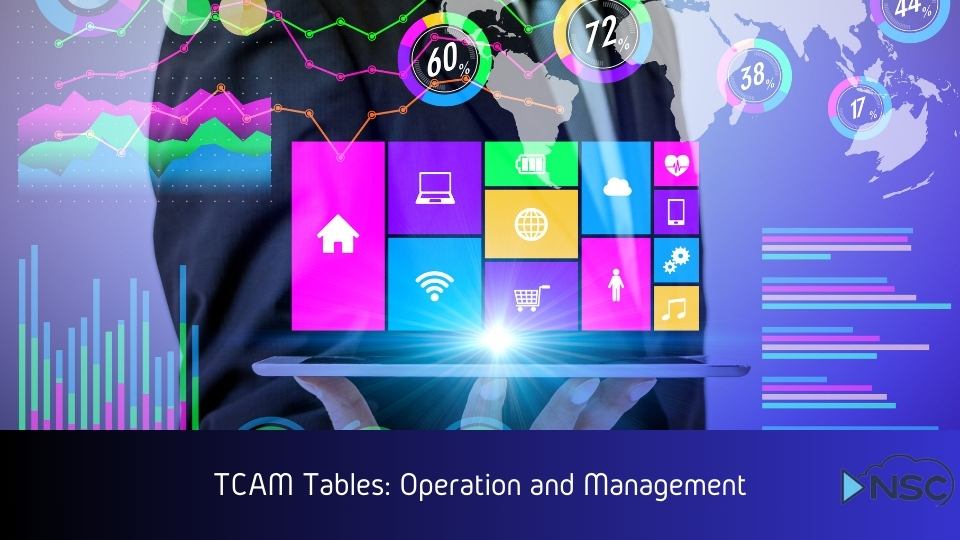Ternary Content Addressable Memory (TCAM) is a specialized type of memory used in network devices that enables high-speed data packet forwarding. Unlike traditional memories that search data sequentially, TCAM allows for parallel searching, making it essential for efficient network operations.
This technology plays a critical role in enhancing the performance of network devices by quickly locating and forwarding data packets based on the headers' content.
Understanding how TCAM tables operate and are managed is crucial for optimizing network performance, especially in complex configurations.
In this article, we will explore the structure of TCAM tables, delve into their management within network devices, and discuss how they contribute to achieving optimal network performance.
Understanding TCAM Tables
To optimize your network's performance and manage data efficiently, understanding the role of TCAM (Ternary Content Addressable Memory) is crucial. Explore our in-depth guide to learn more about how TCAM functions and its applications in modern networking.
Managing TCAM Tables
Configuration and Optimization
Proper configuration and optimization of TCAM tables are critical for ensuring that network devices operate at peak efficiency. One of the primary considerations in managing TCAM is balancing the power consumption and memory utilization. Due to its parallel search capabilities, TCAM can be quite power-intensive and requires strategies to manage its power usage effectively without compromising performance.
Optimizing TCAM for Network Performance: Network engineers must ensure that TCAM entries are prioritized based on the frequency and importance of the data they handle. This involves structuring the TCAM entries so that more frequently accessed data is processed quicker than less critical data. Additionally, because TCAM is limited in size, careful management of the table entries is essential to prevent overflow and ensure efficient usage of the memory space.
Integration with Network Devices
TCAM is integrated into network devices to enhance the processing of Layer 3 data, such as IP routing and ACLs. By storing and rapidly accessing control information, TCAM plays a pivotal role in the fast forwarding of packets across the network. It's particularly effective in scenarios involving complex network policies and multiple routing protocols.
Case Study in Network Device Integration: In Cisco network devices, TCAM tables are used to store ACLs and QoS rules, allowing for swift and efficient policy enforcement. This integration is crucial in supporting high-performance data operations and is discussed extensively in courses like the Cisco CCNP ENCOR 350-401 course, where managing network device performance is a key learning outcome.

Advanced Uses of TCAM Tables
Role in High-Speed Networking
TCAM tables are fundamental in supporting high-speed networking by allowing devices to quickly make forwarding decisions based on complex rule sets. This capability is particularly valuable in environments where network traffic must be inspected and directed at wire speeds. The parallel searching mechanism of TCAM enables routers and switches to handle massive volumes of traffic efficiently, ensuring minimal latency and high throughput.
Enhancing Network Performance: The deployment of TCAM in network devices facilitates the rapid application of security policies and routing decisions, crucial for maintaining robust network performance under high traffic conditions. For example, in high-speed data centers, TCAM's ability to quickly match IP addresses and other header information against pre-defined rules helps in managing data flows intelligently and efficiently.
Summary
Ternary Content Addressable Memory (TCAM) has proven to be a cornerstone in the architecture of modern network devices, driving efficiency and speed in data processing and packet forwarding. As we have explored, TCAM's ability to perform parallel searches and handle complex matching rules makes it invaluable for managing high-speed networks and ensuring robust security and operational integrity.
Significance in Network Infrastructure: The integration of TCAM into network infrastructure enhances the capability of network devices to manage large volumes of data swiftly and reliably. This is crucial in settings like enterprise environments and data centers, where quick data retrieval and security are paramount. The advanced functionality of TCAM supports various network tasks including routing, security policies, and quality of service, which are critical for maintaining continuous network performance and reliability.
Looking Forward: The ongoing evolution of TCAM technology is expected to keep pace with the growing demands of network environments that are increasingly complex and data-driven. Future enhancements in TCAM technology will likely focus on increasing efficiency, reducing power consumption, and expanding capacity to support even more extensive and faster network operations. As these developments unfold, TCAM will continue to play a pivotal role in the advancement of network technologies.


